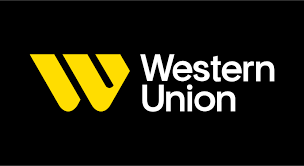How much does Western Union charge to send $1,000?
Sending money internationally can be crucial for various reasons, from helping family members abroad to managing business transactions. Western Union is one of the leading companies in this field, offering services that span across many countries. However, understanding the costs involved is essential for effective money transfers. In this article, we will delve into the fees Western Union charges to send $1,000, explore the factors influencing these costs, and provide a conclusion to help you make an informed decision.
Understanding Western Union Fees
Western Union’s fee structure is influenced by several factors:
- Destination Country: Fees vary depending on where you are sending the money. For example, sending $1,000 to a developing country may incur different fees compared to sending the same amount to a developed country.
- Payment Method: The way you choose to pay for the transfer affects the fee. Options include paying by bank transfer, credit/debit card, or cash. Each method has its own fee structure.
- Payout Method: Western Union offers various payout options, including bank deposits, cash pickups, and mobile wallet transfers. Each of these options might have different fees associated with them.
- Speed of Transfer: The urgency of the transfer can impact the cost. Expedited transfers typically come with higher fees compared to standard ones.
Example Fee Breakdown
To illustrate the costs, let’s consider a scenario where you want to send $1,000 from the United States to Mexico. The following is a general estimate:
- Sending via Bank Account: For a standard transfer, Western Union might charge a fee ranging from $5 to $10. However, if you opt for an expedited transfer, the fee could be higher, around $20 or more.
- Sending via Credit/Debit Card: Using a credit or debit card generally incurs higher fees compared to bank transfers. For sending $1,000, the fee might range from $15 to $30.
- Cash Pickup: If you choose to pay with cash and the recipient opts for a cash pickup, fees can vary significantly. You might expect to pay between $10 and $25 for this service.
Factors Influencing Fees
- Exchange Rates: Western Union’s fees can also include a margin on the exchange rate. This means the rate you receive for converting your dollars into the recipient’s local currency may be less favorable than the mid-market rate.
- Promotions and Discounts: Occasionally, Western Union offers promotions or discounts that can lower the fees. It’s worth checking their website or contacting customer service for any ongoing offers.
- Service Levels: Higher service levels, such as instant transfers, typically come with increased fees compared to standard or economy options.
Conclusion
Sending $1,000 through Western Union can be a straightforward process, but the cost varies based on several factors, including destination, payment method, and transfer speed. Generally, you can expect fees ranging from $5 to $30, with additional costs potentially applied based on the exchange rate and service level chosen.
To get the most accurate fee for your specific needs, it’s advisable to use Western Union’s online fee estimator tool or contact their customer service. By considering these factors and exploring different options, you can ensure that you’re getting the best value for your money transfer, making the process as cost-effective as possible.

